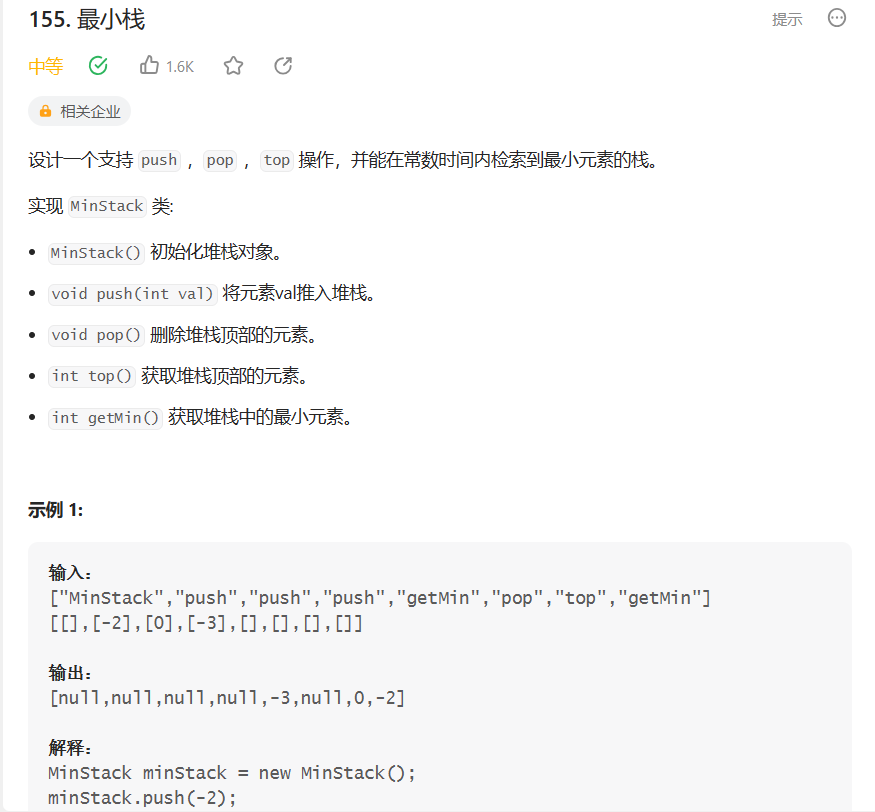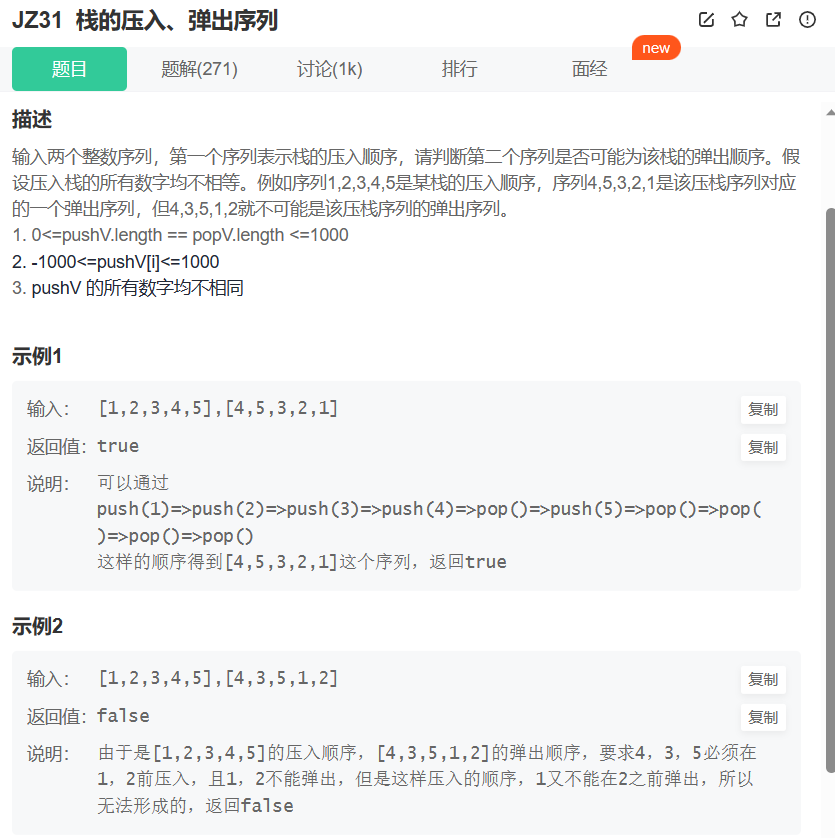描述
栈和队列是计算机科学中非常重要的数据结构,它们可用于许多应用程序中,如编译器、操作系统、网络路由器等。在本文中,我们将讨论栈和队列的基本概念、操作和应用。
一、栈的概念和操作 栈是一种后进先出(LIFO)的数据结构,它的基本操作包括压栈(push)和弹栈(pop)。栈的顶部元素是最后一个被压入的元素,因此它是第一个被弹出的元素。栈的实现通常使用数组或链表。
下面是一些基本的栈操作:
push(item):将元素item压入栈顶。
pop():弹出栈顶元素,并返回该元素。
top():返回栈顶元素,但不弹出。
isEmpty():检查栈是否为空。
isFull():检查栈是否已满(仅适用于数组实现)。
二、队列的概念和操作 队列是一种先进先出(FIFO)的数据结构,它的基本操作包括入队(enqueue)和出队(dequeue)。队列的尾部是最后一个入队的元素,因此它是第一个出队的元素。队列的实现通常使用数组或链表。
下面是一些基本的队列操作:
enqueue(item):将元素item插入队列尾部。
dequeue():从队列头部弹出一个元素,并返回该元素。
front():返回队列头部元素,但不弹出。
isEmpty():检查队列是否为空。
isFull():检查队列是否已满(仅适用于数组实现)。
一、stack
常见接口

模拟实现
namespace tzc
{
//适配器是一种设计模式(设计模式是一套被反复使用的、多数人知晓的、经过分类编目的、代码设计经验的总结),
//该种模式是将一个类的接口转换成客户希望的另外一个接口。
//deque双端队列 优点是首尾端操作方便,一般用作栈和队列的容器适配器
//容器适配器
template<class T, class Container= deque<T>>
class stack
{
public:
void push(const T& x)
{
_con.push_back(x);
}
void pop()
{
_con.pop_back();
}
T& top()
{
return _con.back();
}
size_t size()
{
return _con.size();
}
bool empty()
{
return _con.empty();
}
private:
Container _con;
};
//测试
void test_stack1()
{
//数组栈
stack<int, vector<int>> st1;
//链式栈
stack<int, list<int>> st2;
st1.push(1);
st1.push(2);
st1.push(3);
st1.push(4);
while (!st1.empty())
{
cout << st1.top() << " ";
st1.pop();
}
cout << endl;
st2.push(1);
st2.push(2);
st2.push(3);
st2.push(4);
while (!st2.empty())
{
cout << st2.top() << " ";
st2.pop();
}
cout << endl;
}
}
二、queue
常见接口

模拟实现
namespace tzc
{
//容器适配器
template<class T, class Container= deque<T>>
class queue
{
public:
void push(const T& x)
{
_con.push_back(x);
}
void pop()
{
_con.pop_front();
//_con.erase(_con.begin());
}
T& front()
{
return _con.front();
}
size_t size()
{
return _con.size();
}
bool empty()
{
return _con.empty();
}
private:
Container _con;
};
void test_queue1()
{
queue<int, list<int>> q;
q.push(1);
q.push(2);
q.push(3);
q.push(4);
while (!q.empty())
{
cout << q.front() << " ";
q.pop();
}
cout << endl;
}
}
三、 栈和队列OJ题
① 最小栈

解
class MinStack {
public:
MinStack() {
}
//如果最小栈中没有元素或者比最小栈中元素还要小,就入栈
void push(int val) {
if (minst.empty() || minst.top() >= val)
{
minst.push(val);
}
st.push(val);
}
//如果要出栈的元素比最小栈中的元素还要小,最小栈中元素也需出栈
void pop() {
if (st.top() == minst.top())
{
minst.pop();
}
st.pop();
}
int top() {
return st.top();
}
//最小栈中栈顶的元素就是最小元素
int getMin() {
return minst.top();
}
private:
stack<int> st;
stack<int> minst;
};

解
class Solution {
public:
bool IsPopOrder(vector<int>& pushV, vector<int>& popV) {
// write code here
stack<int> st;
int pushIndex=0,popIndex=0;
while(pushIndex<pushV.size())
{
st.push(pushV[pushIndex++]);
while(!st.empty()&&popV[popIndex]==st.top())
{
st.pop();
popIndex++;
}
}
return st.empty();
}
};